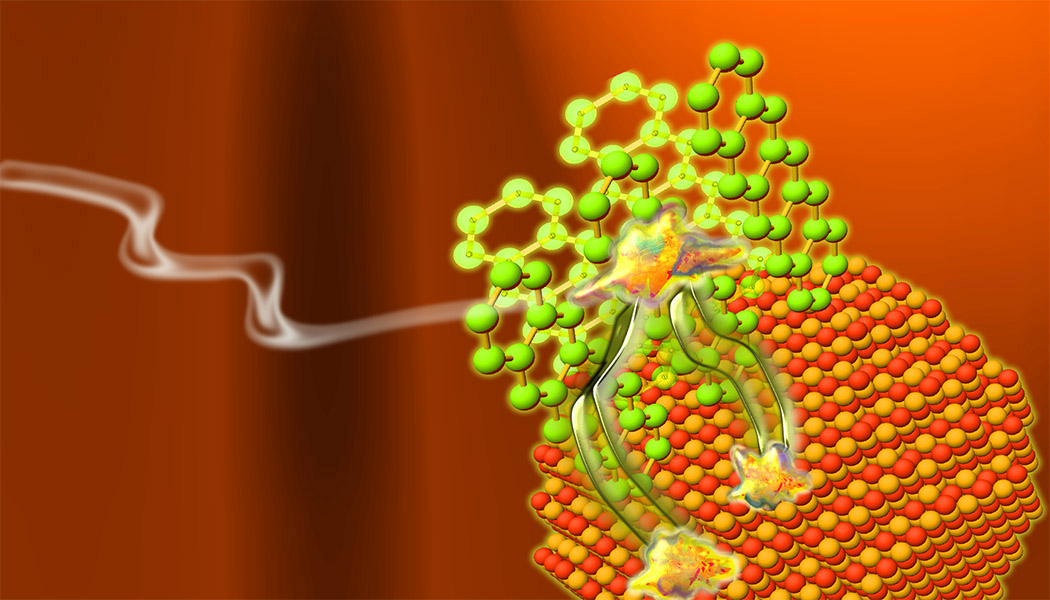To Soak Up The Sun, Change Its Frequency
Or rather, change the wavelength of photons.
We have access to the universe’s most powerful source of energy — the sun. In one hour, it radiates an astounding 173,000 terawatts of power, six times more than what the planet needs. If we can just tap into 16% of that, it’ll be enough to power the entire world.
Instead, here’s where we stand: as of 2013, solar power provides just a mere fraction of 1% of the total energy consumed in the United States. That’s a little over 6,500 megawatts annually, as reported by the Institute of Energy Research. Obviously there’s a huge discrepancy between solar technology’s potential and actual capabilities, and most of that is due to the Shockley-Queisser limit, covered in a previous article.
The quick recap is that current photovoltaic (PV) systems aren’t able to make use of the entire spectrum of sunlight; photons outside the visible range pass right through those cells and are dissipated as heat. In short, they never make it to our power outlet. This profile looks pretty gloomy considering the sunlight we know is made up of 50% infrared, 40% visible, and 10% ultraviolet and others. Essentially more than 50% of what hits our panels goes to waste, simply because PV materials can’t digest them properly.
But a little boundary limit has never stopped scientists in their endeavors. Two research efforts have been tackling those loose spectrum ends from a fresh perspective. Rather than waiting for a miraculous beta cell — which could happen at who knows when — they’ve taken a more proactive stance by splitting photon atoms at the quantum level to make light fit photovoltaic needs, instead.
We’ll get the reds if you get the blues
Says university researchers from the UK and the US. Their approaches are similiar, but as far as we know, the efforts are rooted separately.
Infrared light isn’t energetic enough to make electrons mobile, while blue, ultraviolet, and beyond are too energetic for photovoltaic cells to convert into power. For the first range, researchers at the University of California, Riverside have figured out a way to make use of lower energy photons, by combining them. For the latter range, researchers at Cambridge University are splitting them up. The processes are called upconversion and downconversion, respectively.
Summarizing UCR’s research, at the sub-atomic level, a process called triplet-triplet annihilation (TTA) makes it possible for infrared photons to hop from site to site where they are morphed and combined to form a photon that makes the cut for the visible range. In other words, two infrared triplets are fused together to make visible light, to be emitted to semiconducting layers to generate electricity. The hybrid system that the red team has created for this upconversion process leverages both organic materials and inorganic nanocrystals for their emitting and combining properties.
Now, onto the blue and ultraviolet spectrum.
image credit: singlet exciton fission art by Maxim Tabachnyk
High energy light may not be good for our ozone layer (or skin for that matter), but scientists at the University of Cambridge aren’t about to let them go to waste. Through what’s called singlet exciton fission, the blue team is able to reduce the energy of a blue or UV photon by splitting it into two lower excitons. Turns out at the quantum level everything is irreversible, and the fission process is indeed the polar opposite of TTA.
In short, in an organic-inorganic hybrid system, one high energy photon “morphs” into lower energy pairs, which are then transferred to a nanocrystal layer where they are brightened as visible light and directed into a solar cell. This downconversion process is especially useful for photovoltaic semiconductors as it means one strand of ultraviolet light can be split up into two strands of visible to generate double amounts of current. And when it comes to energy, the more the merrier.
Researchers of both teams are pretty excited about the new possibilities of “spectrum conservation” through the use of such mixed organic-inorganic systems. Combining the advantages of organic semiconductors, which are low cost and easily processed, with highly-efficiency inorganic semiconductors could enable us to further push the efficiency of inorganic solar cells, like those made of silicon, explains Maxim Tabachnyk, researcher in the Optoelectronics group at Cambridge. For down-conversion alone, utilizing triplets from singlet fission can increase power conversion efficiency from 32% to 46%. This increase occurs because we are able to better use the blue part of the solar spectrum, noted the UK team in their latest paper.
Similar efficiency improvements are projected by the red team; Professor Ming Lee Tang from UCR states with near-infrared now in the game, the photon count of silicon cells can be boosted by 20-40%.
Theoretically speaking, if such a novel architecture is added to high efficiency PV cells (with 40% conversion), it could bring performance up to 90%. The most obvious benefit of having such a high power conversion efficiency is that we can harvest more solar power with less materials and area. For large utility companies, this means less land is required for an abundant harvest. For households, it means solar panels on limiting rooftops will still generate enough electricity for us to live completely off-grid.
Those are pretty sweet things to look forward to as both groups improve their device designs. But as UCR notes in their paper, challenges associated with current TTA systems, including a low upconversion efficiency and coupling mechanisms, still need to be resolved before upconversion can be integrated into photovoltaic applications. The UCR researchers are currently testing various approaches including synthetically modifying the hybrid nanostructures and designing waveguide type layers to better channel the high energy photons out and enhance upconversion results. Cambridge team provides their insights:
“To boost the efficiency, alternative pathways to TTA to an emissive excitation in the visible need to be eliminated. To improve the coupling, self-absorption of the emitted visible photons needs to be avoided. Therefore, we need NIR absorber with negligible absorption in the visible. Alternatively, the up-converted excitation could be coupled to a solar cell non-radiatively.”
They’re advancing their own developments, too, looking at alternative ways to increase solar power conversion efficiency via cheap organic coating and extending energy transfer of spin-triplet excitons into other mixed organic-inorganic systems. They’re hoping to extend their research into broader applications.
The teams agree that once the research moves into application zones, both quantum effects could give solar cell efficiency an amazing boost under a single umbrella. Then up- and down-conversion could work together to boost the solar cell efficiency in the entire sunlight spectrum from the IR to the UV, says Mr. Tabachnyk. Professor Tang adds that it would be great if one device could make use of both processes simultaneously:
“This would mean that all the excess energy in photons more energetic than the bandgap can be captured, while all the low energy photons passing through the solar cell that are currently lost can be absorbed.”
Needless to say, exciting developments are at the forefront of photonics development. We certainly hope the next generation of solar panels will have both conversion processes implemented together. Then solar applications can finally soak up infrared, visible, and ultraviolet rays, leaving no light behind.
cover photo: pixabay
Papers cited:
NANO Letters – Hybrid Molecule−Nanocrystal Photon Upconversion Across the
Visible and Near-Infrared
SPIE – Beyond the Shockley-Queisser limit with singlet exciton fission

















